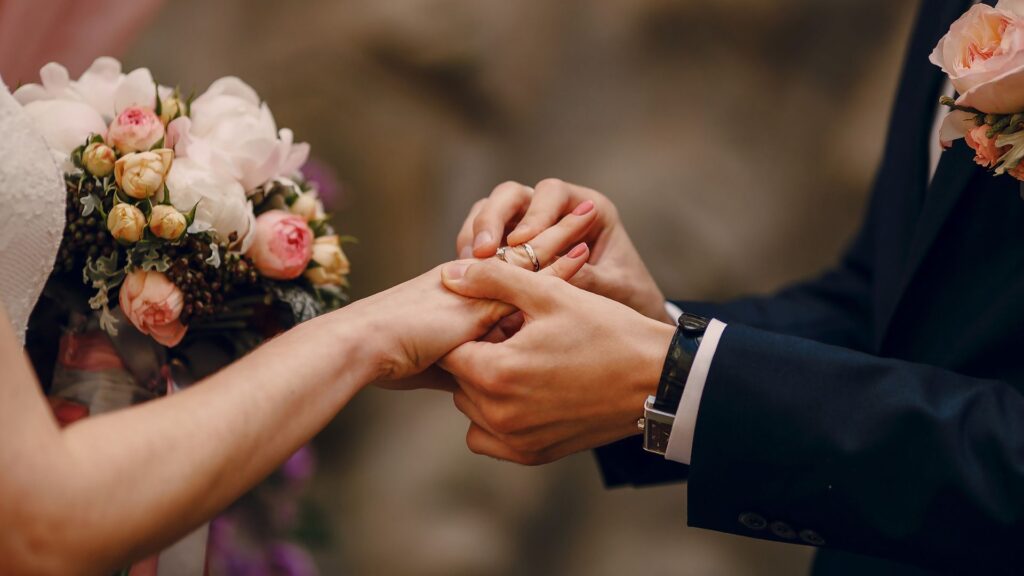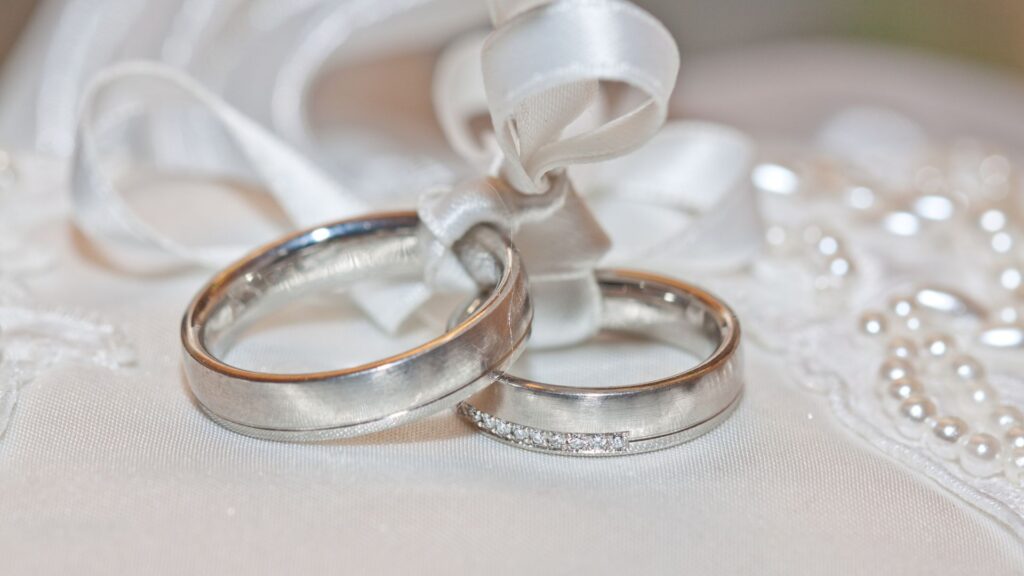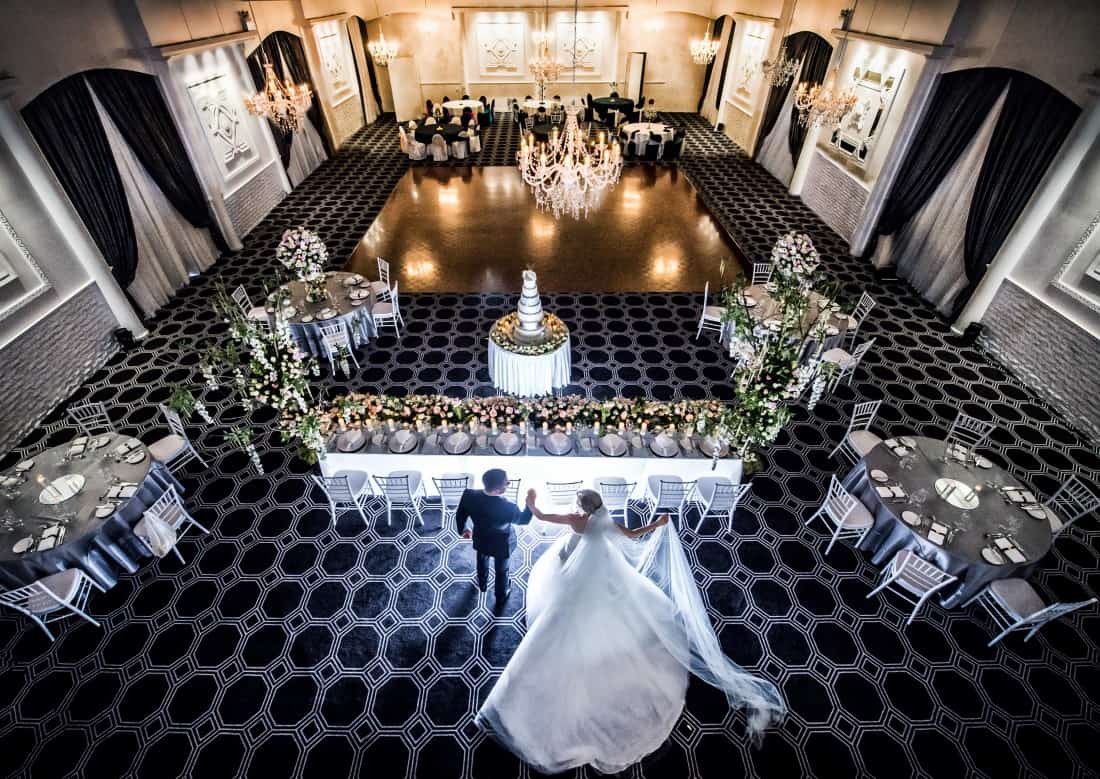Wearing wedding rings is a cherished tradition, with most people associating it with the left hand, particularly the ring finger. This custom dates back to the Tudor era when it was believed that a vein in the left ring finger connected directly to the heart, symbolising love and commitment. However, the placement of wedding rings varies significantly across different cultures and societies, leading to diverse practices and interpretations.
Summary
Wedding rings are traditionally worn on the left hand’s fourth finger, stemming from the belief that a vein in this finger connects directly to the heart. However, many cultures prefer wearing wedding rings on the right hand due to different historical, cultural, and practical reasons. Factors like left-handedness, same-sex marriages, health concerns, and personal empowerment also influence this choice. Ultimately, whether a wedding ring is worn on the left or right hand comes down to personal preference and cultural traditions, with no universally “correct” hand for everyone.
Right-Hand Rings: Cultural Significance And Modern Trends

Which Finger Is Traditionally Used?
While many people associate the left hand with wedding rings, no universal rule dictates which hand or finger a wedding ring should be worn. In some cultures, wearing rings on the right hand is common, especially for larger, more decorative rings like cocktail rings. Women may wear rings on any finger of their right hand, and stacking rings creatively has become a popular fashion trend. Wearing rings on specific fingers, such as the index finger for family crests or the thumb to signify power, also varies depending on cultural traditions.
Reasons For Wearing A Wedding Ring On The Right Hand
Different Cultural Traditions
Cultural norms significantly determine whether a wedding ring is worn on the left or right hand. In many Eastern European and Latin American countries, the right hand is traditionally used for wedding rings. For instance, in countries like Lebanon, Turkey, and Syria, the wedding ring is worn on the right hand until the wedding day, when it may be moved to the left hand. Similarly, in some South and Southeast Asian cultures, such as Sri Lanka, the right hand is used for the wedding ring, while the left is often reserved for other symbolic jewellery.
Practical Considerations For Left-Handed Individuals
For left-handed people, wearing a wedding ring on the left hand can be impractical. The left hand, being the dominant hand, is more prone to activities that could cause the ring to become scratched, dented, or damaged over time. For these individuals, wearing the ring on the right hand can help preserve its condition and keep it safe from daily wear and tear. Additionally, rings worn on the non-dominant hand can be more comfortable and less intrusive during everyday activities.
Same-Sex Marriages And Symbolic Choices
In same-sex marriages, couples often choose to wear their wedding rings on the right hand to distinguish themselves from traditional heterosexual norms. This practice allows couples to express their commitment to each other personally and significantly. There is no strict rule about which finger or hand the ring should be worn on, allowing flexibility and individual expression within the relationship.
Health Concerns And Practicality
Health issues can also influence the decision to wear a wedding ring on the right hand. For individuals with conditions like arthritis, wearing a ring on the left hand might be difficult or uncomfortable. The right hand can offer a more practical solution, allowing the person to wear their ring without causing pain or discomfort. Sometimes, a hinged ring is an option, but switching hands is often the easiest and most cost-effective solution.
Independence And Personal Empowerment
In today’s society, many women are choosing to purchase their diamond rings and other fine jewellery as a symbol of their financial independence and success. This shift reflects broader societal changes, where women increasingly take on roles as primary breadwinners and decision-makers. Wearing a ring on the right hand can signify personal empowerment, independence, and self-reliance, making it a powerful statement of individuality.
Honouring Family Heirlooms
For some couples, wearing multiple rings is a way to honour family traditions and maintain a connection to their heritage. For example, a couple might wear their wedding rings on the left hand while wearing a family heirloom ring on the right hand. This practice allows them to cherish the sentimental value of the heirloom while still adhering to the tradition of wearing their wedding rings on the left hand. By doing so, they can celebrate both their personal love story and the history of their family.
Sign Of Infidelity Or Open Relationships
While it may come as a surprise, some people choose to wear their wedding rings on the right hand as a covert signal that they are open to extramarital relationships or are participating in an open relationship. This practice is not widespread but occurs in certain social circles. By moving the ring to the right hand, the individual signals to others that they are available for a fling or non-committal relationship without abandoning their marriage’s symbol.
The Symbolism Of The Wedding Ring Finger
The Left Wedding Ring Finger
The tradition of wearing a wedding ring on the left hand’s fourth finger originates from ancient Roman beliefs. The Romans thought a vein in this finger, known as the “vena amoris” or “vein of love,” connected directly to the heart. This belief led to the custom of placing the wedding ring on this finger as a symbol of love and commitment. Although modern science has disproven the idea that a specific vein connects to the heart, the romantic symbolism of this tradition has endured through the ages.
The Right Wedding Ring Finger
In contrast to Western tradition, many European countries, such as Russia, Poland, and Greece, have long followed the custom of wearing wedding rings on the right hand. This practice is also common in some same-sex communities, where wearing the ring on the right hand serves as a distinct marker of their relationship. In certain cultures where the left hand is considered less “pure” or less appropriate for significant symbols, the right hand is chosen for the wedding ring.
Cultural And Historical Practices
In India, the left hand was historically considered unclean, which led to the tradition of wearing wedding rings on the right hand. However, this custom has evolved, and it is now acceptable in many parts of India to wear rings on either hand. Similarly, in traditional Sri Lankan weddings, the groom typically wears his wedding ring on the right hand, while the bride wears hers on the left. These practices highlight how cultural beliefs and historical contexts can influence the choice of which hand to wear a wedding ring on.
Challenges Of Wearing Your Ring On The Right Hand

Social Perceptions And Misunderstandings
In cultures where left-hand wedding rings are the norm, wearing a ring on the right hand can lead to misunderstandings. For example, people might assume that you are single, divorced, or unfaithful based on the hand your ring is on. This can create awkward social situations or lead to unwanted attention. However, for those who value their personal preferences over societal expectations, these potential misunderstandings may be of little concern.
Respect And Remembrance
After losing a spouse, many people move their wedding ring to the right hand to symbolise respect and remembrance. This gesture allows them to honour their deceased partner while still keeping the memory of their marriage alive. It can also be a personal reminder of their love and commitment, even after the marriage ends.
The Importance Of Personal Choice
Ultimately, deciding which hand to wear your wedding ring is a personal choice. Whether influenced by cultural traditions, practical considerations, or personal beliefs, the most important thing is that the ring reflects your values and preferences. There is no right or wrong choice—only the one that feels right for you.
Right Hand Vs. Left Hand: Personal Choice And Tradition
Cultural Influences And Regional Differences
The decision to wear a wedding ring on the right or left hand often comes down to cultural influences and regional traditions. For example, in countries like Syria, Brazil, Turkey, and Lebanon, the wedding ring is initially worn on the right hand and later moved to the left after the ceremony. In contrast, in countries like Germany and the Netherlands, newlyweds often switch their rings from the left to the right hand after the wedding. These practices highlight the diversity of wedding traditions around the world.
Jewish Wedding Traditions
In traditional Jewish weddings, the bride wears her engagement ring on her right index finger, moving it to the right ring finger after the wedding ceremony. This practice is rooted in religious customs and has been followed for generations. It serves as a reminder of the cultural and religious significance of the wedding ring within the Jewish community.
Common Practices Around The World
In many countries, including Norway, Poland, Russia, and Austria, wedding rings are typically worn on the right hand. This tradition also extends to other countries, such as Cuba, Colombia, Venezuela, and Peru. The practice of wearing wedding rings on the right hand in these regions is often tied to historical and cultural beliefs that have been passed down through generations.
Conclusion
The tradition of wearing a wedding ring on the fourth finger of the left hand has deep historical roots, originating from the belief that a vein in this finger connected directly to the heart. However, cultural practices vary worldwide, with many countries and traditions preferring the right hand for wedding rings.
From ancient Egypt to the modern world, wedding rings have evolved but remain a powerful symbol of eternal love and commitment. Whether you wear your ring on the left or right hand, the most important thing is that it reflects your values and beliefs. No strict rule dictates which hand is correct—only the one that feels meaningful to you.
FAQs About Wedding Ring
Which Finger Should a Wedding Ring Be Worn On?
The fourth finger of the left hand is the traditional location for the wedding ring in many cultures. The “ring finger” is the fourth finger from the end of the hand, and it is thought to have a special relationship with the heart.
Is It Necessary to Wear a Wedding Ring at All Times?
The decision to always sport a wedding band is entirely up to the couple. While some choose to flaunt their marital status at all times, others only do so on special occasions or when wearing their wedding ring.
Can a Wedding Ring Be Worn With Other Rings?
An engagement ring or promise ring can be worn alongside a wedding band, and vice versa. But pick rings that go well together in terms of design and style.
Can a Wedding Ring Be Resized?
In case your wedding band is too large or too small, you can have it resized. Visit a reputable jeweller to have the ring resized to avoid damaging the piece.
Is It Bad Luck to Take Off a Wedding Ring?
If you believe it brings bad luck to remove a wedding ring, that’s your business. Taking off one’s wedding ring is interpreted differently by different people; for some, it’s a sign of infidelity, while for others, it’s just a piece of jewellery. Whether or not to remove a wedding band depends on the person and their values.

